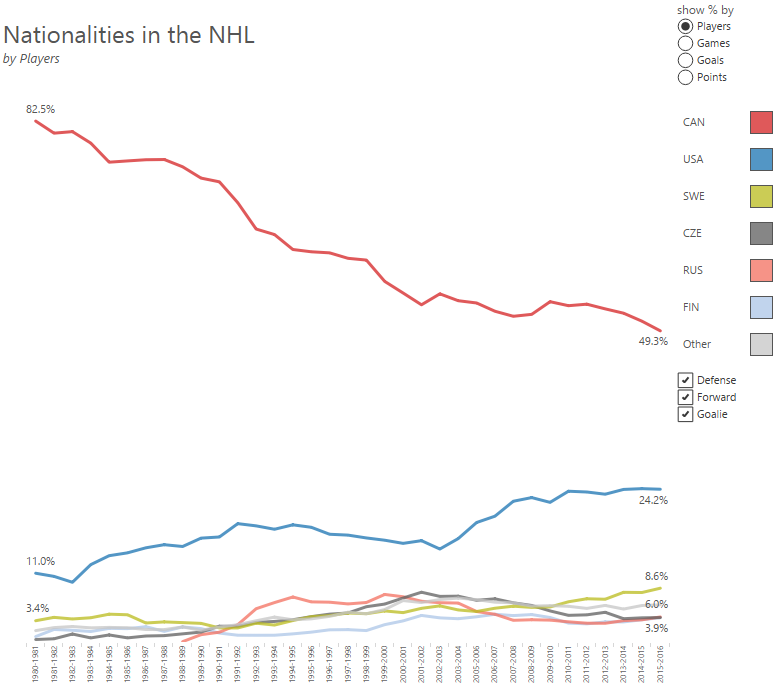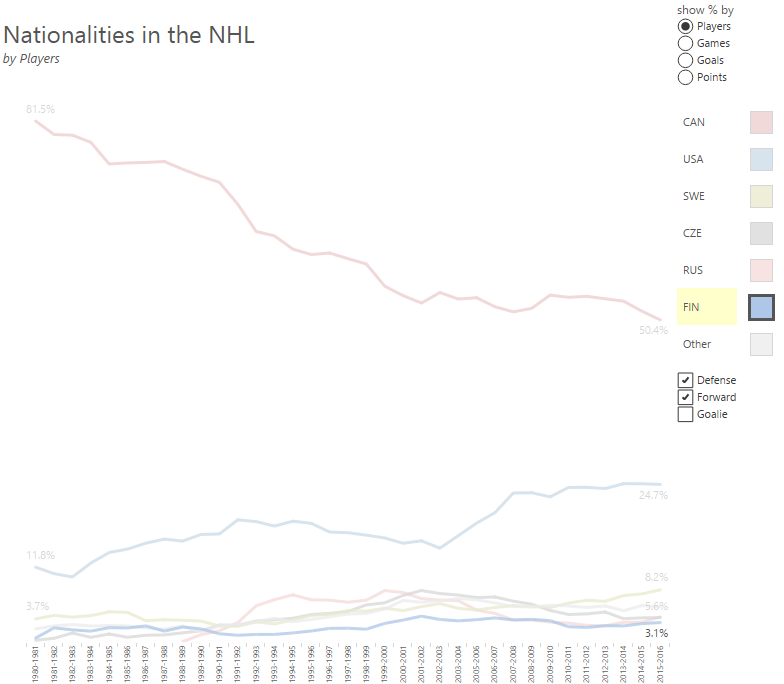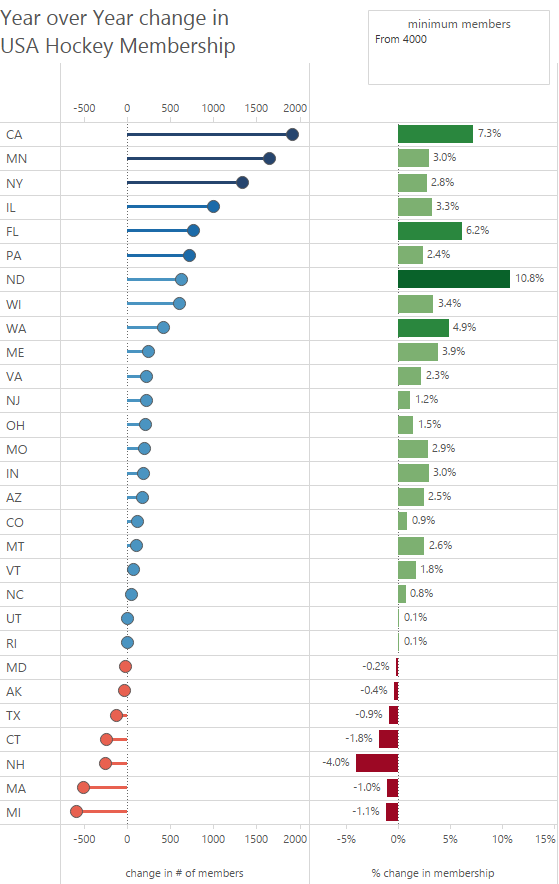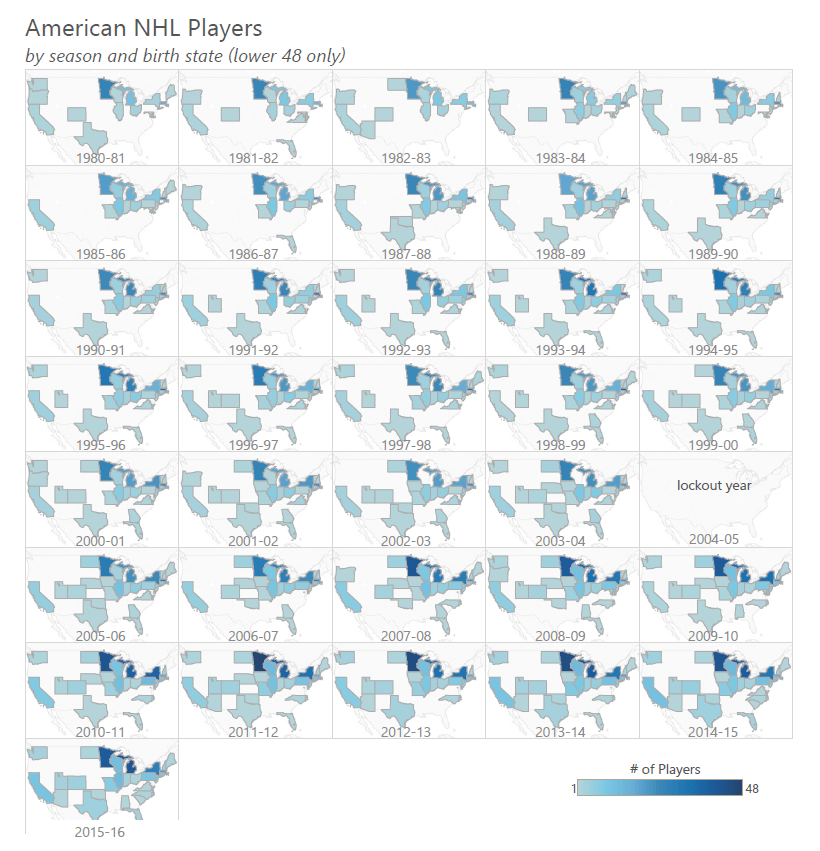Last season was all about the Finns. They won nearly every tournament they played, had the hottest draft prospects, and it was obvious Finland had become the newest, greatest hockey power.
It all started in January at the World Junior Championships where Kasperi Kapanen scored the golden goal. The U18 team won their championship a few months later, and the men's team took the silver to Canada's gold at the World Championships in May.
Then there was the draft where Patrik Laine and Jesse Puljujärvi went second and fourth. Both might make the rarely achieved leap from the Liiga straight to the NHL with no stops in between. Olli Juolevi, who had opted for the OHL, was drafted fifth overall as well, and it was all Finns all the time.
We were all sure this was the crest of a wave.

Chart by 3rdlinegrind. This view is based on number of players as a percentage of league total.
There is no wave.
The Finnish national teams' success might be an indication that the changes Finland made to their hockey program several years ago are producing a better quality of player, but there is no evidence that the number of Finns making it to the NHL is growing. Switching that chart to goals or points doesn't change much either.
If you take out goalies and just look at skaters, the picture is even clearer. (The highlighted line is a very pale blue, so apologies if it isn't very clear. Open the image in a new tab for full size.) The number of Finnish skaters crested in 2002 at 4.1% of the total players in the NHL and they've stayed near 3% ever since.

Canadian domination of the NHL is declining as some of the other nationalities are taking greater shares of the available jobs. The Russians and Czechs crested around 2000 and are declining, something that the KHL is almost certainly responsible for. Meanwhile, the Swedes have nearly doubled their share since the eighties, and "other" (think Team Europe) is also growing at about the same rate as the Swedes.
But the real growth is coming from the genuine newest, greatest hockey power: the United States of America. And the realities of demographics say that's only going to continue.
| Country | Registered Players: Total | RP: Senior | RP: U20 | Total Population | Senior Players per 1000 of Total Population | U20 Players per 1000 of total popularion |
|---|---|---|---|---|---|---|
| Canada | 721,504 | 116,884 | 518,008 | 35,099,836 | 3.33 | 14.7581 |
| United States | 533,172 | 156,357 | 307,071 | 321,368,864 | 0.4865 | 0.9555 |
| Czech Republic | 109,103 | 79,838 | 26,551 | 10,644,842 | 7.5001 | 2.4942 |
| Russia | 99,172 | 11,320 | 86,100 | 142,423,773 | 0.0794 | 0.6045 |
| Finland | 75,871 | 29,683 | 39,731 | 5,476,922 | 5.4196 | 7.2542 |
| Sweden | 60,089 | 13,060 | 43,311 | 9,801,616 | 1.3324 | 4.4187 |
| Germany | 25,201 | 7,196 | 15,646 | 80,854,408 | 0.0889 | 0.1935 |
| Switzerland | 23,296 | 6,639 | 15,530 | 8,121,830 | 0.8174 | 1.9121 |
| France | 20,656 | 8,324 | 10,217 | 66,553,766 | 0.125 | 0.1535 |
| Japan | 19,287 | 9,965 | 7,103 | 126,919,659 | 0.0785 | 0.0559 |
| Austria | 11,754 | 6,069 | 5,009 | 8,665,550 | 0.7003 | 0.578 |
| Slovakia | 11,518 | 3,285 | 7,542 | 5,445,027 | 0.6033 | 1.3851 |
| Great Britain | 10,896 | 5,625 | 4,170 | 64,088,222 | 0.0877 | 0.065 |
| Norway | 6,629 | 1,818 | 4,179 | 5,207,689 | 0.349 | 0.8024 |
| Ukraine | 6,181 | 2,425 | 3,724 | 44,429,471 | 0.0545 | 0.0838 |
| Italy | 5,851 | 1,362 | 4,149 | 61,855,120 | 0.022 | 0.067 |
| Latvia | 5,841 | 4,017 | 1,722 | 1,986,705 | 2.0219 | 0.8667 |
| Kazakhstan | 4,892 | 438 | 4,279 | 18,157,122 | 0.0241 | 0.2356 |
| Belarus | 4,851 | 1,569 | 3,277 | 9,589,689 | 0.1636 | 0.3417 |
| Hungary | 4,622 | 636 | 3,509 | 9,897,541 | 0.0642 | 0.3545 |
| Denmark | 4,295 | 1,680 | 2,198 | 5,581,503 | 0.3009 | 0.3938 |
The raw numbers show that Canada and the USA are leading the world in playing hockey at all levels. But proportionally to the national population, you can see where the Finnish strength is coming from.
No one puts kids in hockey like Canada puts kids in hockey, but Finland comes the closest on a proportional basis. Both Finland and Sweden have high participation rates at all levels.
Once you get to the senior level, Finland converts those happy kids playing a game they love to adults playing at a much higher rate than anyone else but the Czechs.
But America has a base population that overwhelms all the rest of us hockey playing nations. They've already got more senior registered hockey players than Canada. They don't even need to grow the game to keep upping their NHL share.
But they are growing the game.
USA Hockey works hard to promote and sell the game beyond its obvious winter-weather niche markets, and the US NHL teams join in. The results are not just Auston Matthews, the boy from Arizona. The results are thousands of new hockey players every year, and a lot of them are in very sunny locations.
At the Leafs rookie tournament this year, Trevor Moore from Thousand Oaks, California was on the ice with Cason Hohmann from Arlington, Texas along with the usual Minnesotans and New Englanders.

Note that the small decline in some states is made up for by the growth in California alone. California is one sunny locale where NHL teams are heavily involved in youth hockey.
That growth over the years has translated into a change in where the American NHL players are from:

So why aren't the Finns taking over the NHL given their high participation rate in hockey at home? It's not a language barrier. English proficiency in Finland is nearly as high as in Sweden. It might be a greater willingness of Finns to go next door to Russia and play in the KHL.
In 2014 when Jokerit Helsinki joined the KHL, they took a team full of Finns with them. Most of them stayed. Finns are now the second largest nationality in the KHL, and there have been close to 50 Finnish players in the league each year since Jokerit joined—a broadly similar amount to the number of Canadians. There were 42 Finns in the NHL last year.
But for Swedes, the spread is very different. There were 89 in the NHL last year and 28 in the KHL—a proportion that holds for other recent years.
Finns may be choosing the KHL because of proximity or because the Finnish game is more suited to the KHL, but whatever the reason, they are not moving out of the Liiga and into the NHL at a higher rate. So far, that is. We may be seeing, not the crest of the wave, but the beginning of the swell. Only time will tell us which.
In the meantime America will win the demographic contest because this is a game where size does matter.
One place Finns have gone is China. The KHL team in Beijing, Kunlun Red Star, has more Finns than any other nationality—for now. When Chinese hockey starts to grow, the real demographic powerhouse won't be America anymore.
But that's far in the future. Right now, the Americans aren't coming, they're already here, despite that World Cup of Hockey team that was an insult to the true depth of American skill.
Acknowledgements
Population charts are from the IIHF survey of players 2015. The 2016 numbers are just out and show a small decline in Finnish hockey registration across the board.
3rdlinegrind has done an immense amount of work on this topic and is the source for the demographic charts used here. The interactive version of the NHL population chart allows you to filter by country or type of player and is fun to play with.
For more detail on American hockey demographics, I recommend this extensive post on the topic.

Comment Markdown
Inline Styles
Bold: **Text**
Italics: *Text*
Both: ***Text***
Strikethrough: ~~Text~~
Code: `Text` used as sarcasm font at PPP
Spoiler: !!Text!!